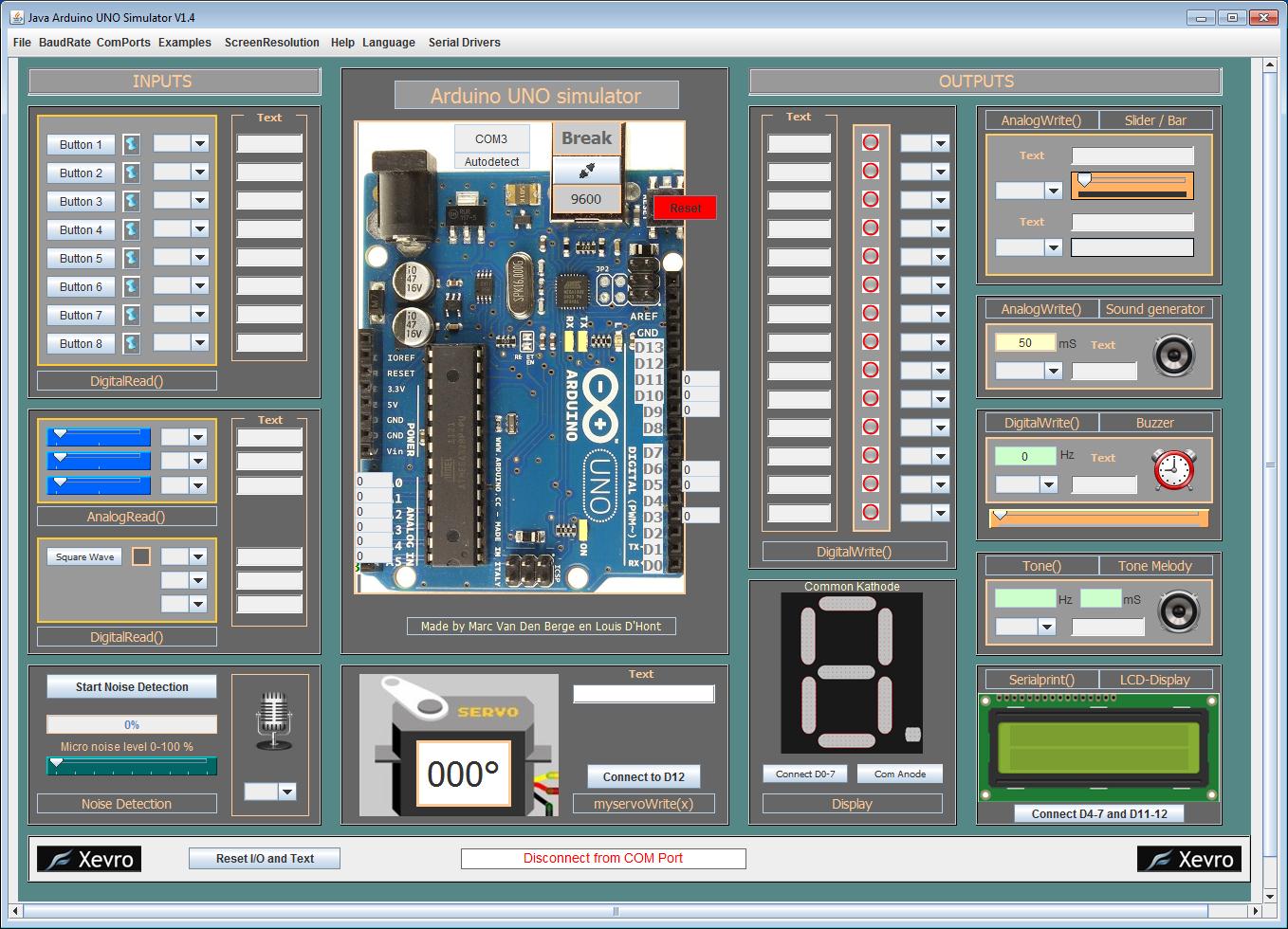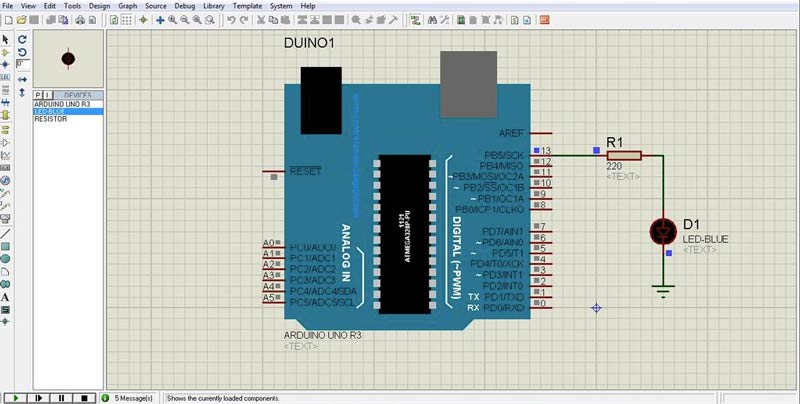

- #Arduino simulator 1.4 serial
- #Arduino simulator 1.4 pro
- #Arduino simulator 1.4 code
- #Arduino simulator 1.4 Pc
Supports symbolic debug of all datatypes including scope information.
#Arduino simulator 1.4 Pc
AVR ONE! is driven by powerful FPGA which provides high-speed data transfer between the host PC and the target AVR device, facilitating rapid program download and a most responsive debugging experience. It also supports LiveDebug, which makes it possible to attach to a running target non-intrusively, and the Nexus auxiliary interface for high-speed program, data or ownership trace at up to 200MHz in either buffered or streaming mode. It supports SPI, JTAG, PDI, and aWire programming modes and debugging using debugWIRE, JTAG, PDI, and aWire interfaces. AVR ONE! supports the complete development cycle and is is the fastest debugging tool offered from Atmel. It is used for source level symbolic debugging, program trace and device programming.
#Arduino simulator 1.4 code

Firmware upgradeable for supporting future AVR devices.Full-speed USB 2.0 compliant host interface (12 MB/s).Uploads 256Kb code in ~60 seconds (XMEGA using JTAG interface).Robust level converters support 1.8V to 5.5V target operation.On-board 128kB SRAM for fast statement-level stepping.Supports up to 3 hardware program breakpoints or 1 maskable data breakpoint (depending on the OCD mo.The debugger also supports NanoTrace, depending on the OCD module on the AVR devic, using the target device's memory.
#Arduino simulator 1.4 serial
It can perform a symbolic debug on all devices with OCD with SPI, JTAG, PDI (selected devices), high voltage serial programming, parallel programming, and aWire modes, and supports debugging using SPI, JTAG, PDI interfaces.Ī development area lets designers build their own circuitry or add sockets for the desired device footprint. The AVR Dragon sets a new standard for low cost development tools for 8-bit and 32-bit AVR devices with On Chip Debug (OCD) capability. Is it worth spending some time on examining the current state or different ones, regarding my expectations?Ītmel makes several Debuggers for the ATMega328P chips: I found a forum thread from begin of this year, which seems about a very early version of this one. Who has experience with those simulators?ĭo they behave identical to a real Arduino in terms of code compilation, memory limitations ?Ĭan you interactively / programmatically control inputs ? (simulate real world behavior ?)Ĭan you simulate output to led / lcd / scope or at least read pin values and variables content ? I don't expect to simulate timing behavior identical ( simulating every processor clock cycle in exact real time )īut the ability to debug Arduino sketches, looks interesting to me, eventually saving lots of upload cycles with different Serial.print() statements.

There seem to be other simulators available ArduinoSim, Simuino. ( very strange, I thought Arduino is open source )
#Arduino simulator 1.4 pro
The Pro Version has no such limitations but is to be licensed. I ran into an Arduino Simulator from The Free version has a 1minute delay on opening sketches and is code limited to 100 lines.


 0 kommentar(er)
0 kommentar(er)
